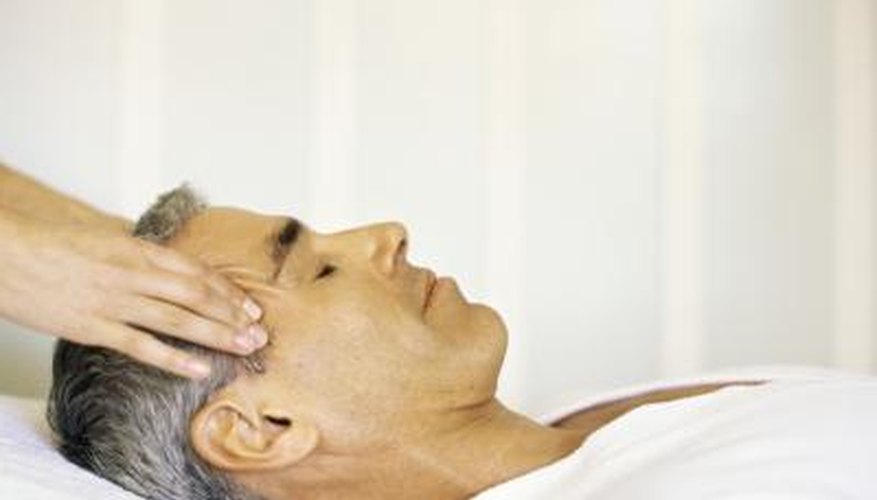In India head massage, known as champissage, has been used for centuries for cleansing, relaxation and medical purposes. The practice began with women using it to treat their daughters' hair. Barbers have also used it as part of the process to cut their male clients' hair. The tradition has been passed on in Indian families from one generation to the next.
Origins
Head massages originated as part of the ancient Indian practice of medicine, called Ayurveda, based on balancing the body, mind and spirit to promote a long life. Ancient Indians believed that massage of all types, used with herbs, spices and oils, promoted strong muscles and skin, good health and encouraged the body's natural healing powers.
Practices
Indian women began offering head massages to their daughters more than 1,000 years ago. They combined them with oils, which included coconut, almond, olive and buttermilk, to keep their hair in good condition. Indian barbers have made head massages part of the hair cutting treatment for men, as a means to refresh their clients. Traditional Indian head massage originally included just a massage of the scalp and hair. Modern Indian head massages include neck, face and shoulders as well. Those who receive an Indian head massage sit up and remain clothed, unlike many other types of massages. Certification is not required for Indian head massage, but there are a number of schools around the world that train students in the practice.
- Indian women began offering head massages to their daughters more than 1,000 years ago.
- Indian barbers have made head massages part of the hair cutting treatment for men, as a means to refresh their clients.
Expanding Tradition
The tradition of Indian head massages was confined to India until native Indian Narendra Mehta travelled to England in 1973 to study physiotherapy. He began offering the head massage practice in England and it spread to other Western countries as more people learnt the technique. Mehta also expanded the tradition to a more holistic massage of the head, neck and shoulder region. He used his heightened sensitivity as a blind man to identify the other areas related to the head that would also benefit from the massage.
- The tradition of Indian head massages was confined to India until native Indian Narendra Mehta travelled to England in 1973 to study physiotherapy.
- He began offering the head massage practice in England and it spread to other Western countries as more people learnt the technique.
Modern Application
Today many Indian babies still receive daily head massages to keep them in good health. From ages three to six they are massaged once or twice a week. After age six they are asked to share the massage technique with other members of their family. Indian head massages are still performed by barbers and beauticians in India and throughout the world. Today the massage practice is available in many different settings, such as physical therapist offices, leisure centres and during exhibitions and conferences.
- Today many Indian babies still receive daily head massages to keep them in good health.
- After age six they are asked to share the massage technique with other members of their family.
